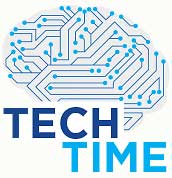Imagine: A new patient completes an assessment on a laptop or smartphone prior to coming to the clinic. The assessment gathers information on dozens of variables—more than any one clinician could sort through in a standard history—that are likely to impact diagnosis, prognosis, and medication response.
Those variables are fed into an electronic health record system with similar information on thousands or tens of thousands of patients. The computer combines all these pieces of data in an algorithm, or formula, that produces a data-driven portrait of the patient prior to his or her visit.
No longer the stuff of science fiction, this scenario could dramatically transform psychiatric diagnosis and treatment, particularly in such crucial areas as predicting which antidepressant is best for a patient or which high-risk patient may progress to psychosis.
The possibility of improving such predictions draws on an emerging technology—“machine learning”—merging artificial intelligence and biostatistics. Machine learning allows a very large number of patient variables to be combined with a vast and ever-growing wealth of population data (sometimes called “big data”) to more reliably predict an outcome of interest for individual patients. With each new piece of data, the computer “learns” to refine its prediction—hence the term “machine learning.”
“Machine learning is a branch of artificial intelligence that focuses on strategies for improving the ability to make certain predictions,” explained John Krystal, M.D., the Robert L. McNeil Jr. Professor of Translational Research, professor of psychiatry and of neuroscience, and chair of the Department of Psychiatry at the Yale School of Medicine.
Prediction is a critical and ubiquitous aspect of practicing medicine: High blood pressure puts people at risk for stroke, and the ability to make this prediction allows physicians to formulate an effective prevention strategy aimed at keeping blood pressure in the normal range.
“Most of us can keep a few predictors in mind at a given time,” Krystal said in an interview. “Psychiatrists, for example, pay attention to a few key factors in the clinical history that enable us to apply the standard diagnostic framework and to choose medication treatments.” However, he continued, the “inability to pay attention to more than a few key facts at a given time limits our ability to diagnose and treat patients effectively. How would we manage if psychiatrists actually had to keep 30 independent pieces of data in mind to do better than random chance in selecting a particular medication for a particular patient? This is the challenge that we face in trying to do better than random chance in selecting antidepressant medications for particular patients.”
He noted that in the STAR*D trial, for instance, only about a third of patients achieved remission on their initial antidepressant. “I think that most people would hope that we could do better than that in psychiatry,” he said.
“This is where machine learning comes in. Computers can pay attention to numerous potential predictors. By testing the role of individual predictors in isolation and in combination, the computer can identify the combination of predictor variables that most powerfully predicts an outcome, such as the response to antidepressants.”
In a landmark paper last year in
JAMA Psychiatry, Adam Chekroud, Ph.D., an assistant professor of psychiatry at Yale, and colleagues (including Krystal) used machine learning to analyze the predictive value of 20 depressive symptoms on choice of antidepressant medication using data on more than 7,000 patients from nine antidepressant clinical trials. They found three “symptom clusters” that predicted response to antidepressant medication (
see here for summary of seminal articles on machine learning).
The field of schizophrenia research is especially ripe for the potential of machine learning. In a paper published in Lancet Psychiatry in August 2016, Chekroud and lead author Nikolaos Koutsouleris, M.D., applied machine learning to data from 334 patients in the European First Episode Schizophrenia Trial to predict poor versus good treatment outcome among patients with first-episode psychosis after four weeks and 52 weeks of treatment.
The September Schizophrenia Bulletin included five articles on machine learning. In an accompanying editorial, Neeraj Tandon, M.D., and Rajiv Tandon, M.D., noted that the number of articles on machine learning in Schizophrenia Bulletin has increased from an average of one per year from 2004 to 2013 to nine last year and 15 this year.
But Rajiv Tandon and others who spoke with Psychiatric News said that despite the rosy promise of machine learning, there are many obstacles and challenges to harnessing its potential. “There have been so many fads, and we’ve discovered the ultimate answer in psychiatry a thousand times,” Rajiv Tandon said in an interview. “Machine learning could be just another one.”
The biggest challenges are sensitivity and specificity of an algorithm’s predictive results. Ultimately, the results of any algorithm must be replicable across different datasets. “This is a particularly important challenge as a medical test must apply to all potential patients or, if not, it must be very clear for whom the medical test is informative,” Krystal said.
In their editorial, the Tandons outlined at least five points—from the gathering of data to their input and interpretation by the computer algorithm—where results from a machine learning study may be skewed in a way that limit replicability and generalizability.
Chekroud emphasized that more data do not necessarily produce a “truer” picture of what one wants to predict if the wrong data are being gathered. An anecdotal way to think of this problem is to imagine an effort to predict someone’s height.
“If I gave you a classroom of people and loads of information, you should probably focus on things like sex and weight, since those are the variables that would be predictive about people’s height in other classrooms,” Chekroud said. “But if I also gave you irrelevant, distracting information like, say, eye color, it might happen that all the blue-eyed people were taller in that classroom. But in future classrooms, focusing on eye color will make you worse at guessing height.”
So, gathering the right information, not just more information, is critical. Chekroud suggested that one way forward is for researchers to share their algorithms so they can be tested across different datasets. (Although computer algorithms are not typically proprietary, they may be guarded as trade secrets, especially in commercial environments).
“Although our field’s exuberance about the promise of machine learning is justified, discipline is warranted,” the Tandons wrote in their editorial. “The power of machine learning is such that its application to varied schizophrenia datasets will certainly generate a plethora of findings. Whether these findings contribute to a more valid construct of schizophrenia or merely add to the many unused bricks already strewn in the schizophrenia brickyard significantly depends on how we use machine learning in our research efforts.” ■
The editorial by Neeraj Tandon, M.D., and Rajiv Tandon, M.D., “Will Machine Learning Enable Us to Finally Cut the Gordian Knot of Schizophrenia” can be accessed
here.


